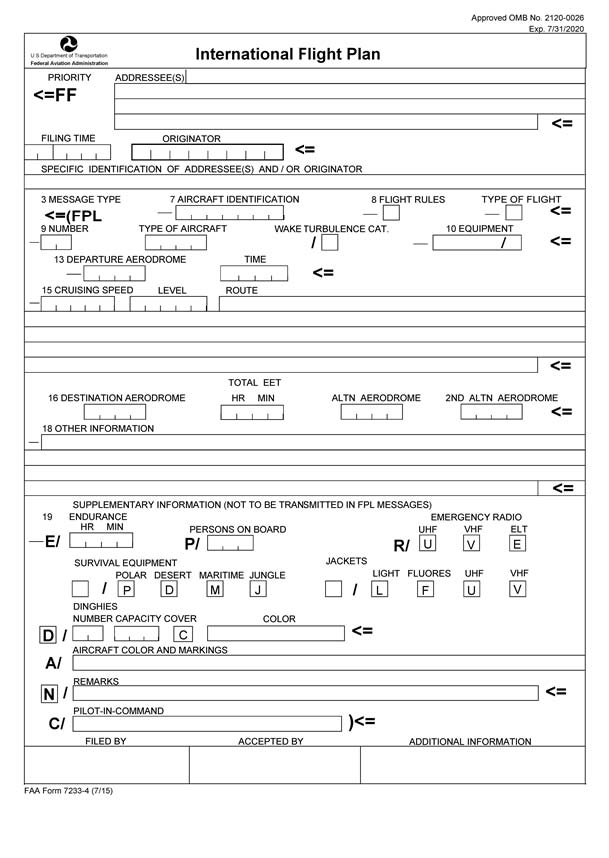
Smart Flight Plan
The world is becoming smart due to the variety of technology that allows systems to be self-monitoring, and analytical as well as being able to report on the results of their analysis. In short, SMART is an abbreviation for Self-Monitoring Analysis and Reporting Technology.ATC flight Plans are documents that provide specific information to the flight services in connection with an intended flight. Normally, these navigation flight plans are made in accordance with the instructions of the operator in the operations manual. These are used to help the pilot in navigation.

Flight Plan
Normal Flight plan
A normal flight plan is a written document that provides specific information to air traffic units under instructions from the operator’s operations manual. For an international one, you need to provide information such as flight route, aircraft identification, departure and arrival points, special equipment, and cruising altitude. Domestic flights with no advanced capability can use simplified instructions to file their international format.
Completion of an ICAO flight plan is only a matter of filling the required information in the appropriate boxes. The white boxes refer to the required information. The information is to be filled in by the pilot or flight dispatcher. The shaded boxes refer to the information to be filled by the ATS and COM services. While filling in this data, you should adhere to the prescribed format.

Smart Flight Plan
Smart Flight Plan
The smart flight plan is expected to be the most sophisticated and efficient flight planning system available in the industry. It is designed to provide strategic operational advantages. It uses an advanced probabilistic roadmap algorithm. This system was developed by Qantas and the Australian center for field robotics as a joint project. Qantas says the purpose of this project was to create a single common platform to integrate operational and business decisions to attain the highest flexibility, efficiency, and predictability without any compromise on safety.
Dispatchers will simply be providing the system guidance and reacting to exceptional warnings. This approach frees operational staff to attend to more high-value tasks and target higher efficiency. Data management and exchange with other stakeholders in the flight planning process is a key feature of this next-generation flight planning system.
With aeronautical information management continuing to mature, there is a need for a platform to collaborate with these external actors in a two-way system. These include revised schedules and routes, and optimizations for traffic patterns. In steady of sharing this data, the system is currently providing AIXM and WIXM support. Future support will include FIXM together with concepts such as Target arrival time and ATM and CDM
Flight plans are an integral part of aviation. Flights are generally journeys and any journey requires planning ahead of the journey. Every aspect of the flight or journey requires prior planning. This planning includes the departure point and arrival point. It should include the passenger numbers and cargo.
Fuel capacity and the route are also part of the smart plan. The flight planning is done on a form whose Format is approved by ICAO. The main purpose of this formatting is to ensure that it captures all material data required before flight. A flight dispatcher goes through this data with the flight crew in a pre-flight briefing. The information on these smart flight plans also tells the crew about the weather on their route and alternate routes they can follow in case of bad weather in the planned or normal route
The smart flight planner is designed to automate this planning so that it is done by an application in conjunction with the dispatcher. The application does the brick-and-mortar job while the dispatcher or pilot only monitors for any alerts. This relieves the pilot or the dispatcher and allows him to do more urgent tasks. These smart applications also increase flight safety as it reduces the chances of safety issues that might occur due to human factors.
.
